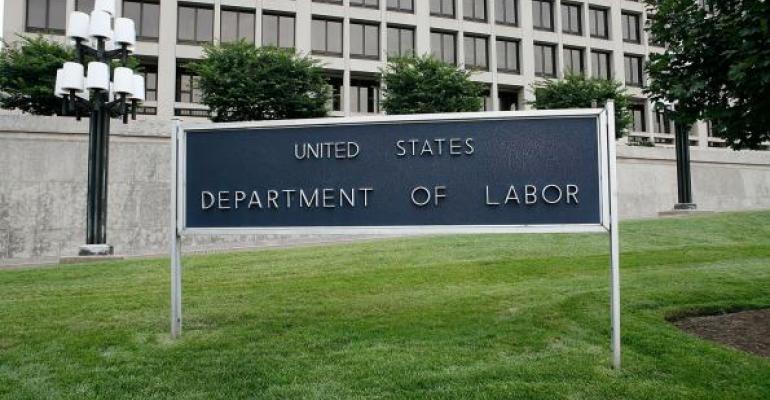June 9 has come and gone and civilization has not collapsed. The clock is now ticking toward the January 1, 2018, full compliance date, but the Department of Labor’s fiduciary compliance regulations are still in flux, says Jim O’Shaughnessy, managing partner of Sheridan Road, a wealth management and plan-consulting firm in Northbrook, Illinois. O’Shaughnessy believes there is a “decent likelihood” the DOL will delay full implementation beyond year end. Nonetheless, Sheridan Road, which has both a broker/dealer affiliation and registered investment advisor business, isn’t banking on a delay. “I think we are operating under the assumption that we have to be in full compliance by January 1, knowing that there may be changes that occur before January 1, or they may push out the full implementation date sometime later in 2018,” he says.
Some Breathing Space
The DOL’s transition-period guidance offered relief under the best interest-contract exemption for advisors complying with the impartial-conduct standards. According to the agency’s Conflict of Interest FAQs (Transition Period) issued in May, financial institutions and advisors must give advice that is in the best interest of the retirement investor. This standard has four key components:
- Prudence: Advice must meet a professional standard of care as specified in the exemption’s text
- Loyalty: Advice must be based on the customer’s interests rather than the competing financial interest of the advisor or firm
- Charge no more than reasonable compensation
- Make no misleading statements about investment transactions, compensation and conflicts of interest
In a late-June webinar sponsored by Sheridan Road, Howard J. Levine, a partner with attorneys DrinkerBiddle in Chicago, noted that, during the transition period, the DOL won’t pursue claims against fiduciaries that are working diligently and in good faith to comply with the rule and its exemptions. Unfortunately, the DOL’s guidance isn’t completely clear. One clue to its interpretation could be the agency’s guidance that during the transition period, financial institutions are expected to adopt policies necessary to ensure advisors comply with the impartial-conduct standards, Levine said. Failing to adopt such policies likely would be seen as evidence the firm wasn’t working in good faith and was not in compliance.
In the Meantime
One possible cause for more changes is the divergence between the Trump administration’s goals and the fiduciary rule’s current form. In a May 23, 2017, Wall Street Journal opinion piece, Secretary of Labor R. Alexander Acosta wrote: “Although courts have upheld this rule as consistent with Congress’s delegated authority, the Fiduciary Rule as written may not align with President Trump’s deregulatory goals … The Labor Department has concluded that it is necessary to seek additional public input on the entire Fiduciary Rule, and we will do so.” On June 29, the DOL followed through with a Request for Information that will open additional comment periods after the RFI is published in the Federal Register.
Business Implications
Regardless of the regulations’ final form, the fiduciary rule is already unleashing competitive forces in the industry, according to Jason Roberts, CEO of Pension Resource Institute and a partner with Retirement Law Group in Redondo Beach, California. He cited several developments in an email response. Plan advisors currently serving retirement plan clients in a fiduciary capacity, typically specialists and those focused on mid- and large-plan markets, will be looked to for assistance in vetting their clients’ other service providers to determine that impact of the rule’s broader definition. Also, advisors serving the smaller end of the market should expect to see significant disruption from larger competitors because many plan specialists have been developing models designed to deliver more scalable services down-market. Finally, advisors that have been receiving variable, third-party payments will be pressed to eliminate conflicts, as plan sponsors are reluctant to add to their fiduciary risk.
O’Shaughnessy agrees the competitive landscape is changing already. A growing number of wealth managers are approaching Sheridan Road to explore the possibility of selling the institutional sides of their businesses. He also points to an influx of advisors currently working under the brokerage model looking to partner with established RIAs; his industry peers are describing the same experience, he says: “All the established RIAs are looking to grow (and) are seeing high increase in terms of activity, of people reaching out to them, looking to, again, either partner or sell a portion of their book or all their book, of their practices.”
Watch the Tweets
Fiduciary-rule predictions are still speculative at this stage, but advisors must monitor the regulatory news for possible developments that could affect their businesses. As one source half-jokingly explained it, he checks his Twitter feed every morning to keep up with potential changes and avoid nasty surprises.





